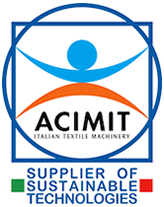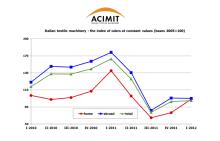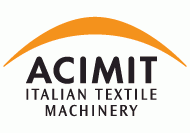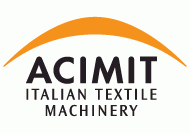Italian Textile Machinery: State of the Industry Report 2012
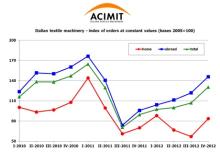
Orders of Italian textile machinery are on the rise for both the domestic and foreign markets. ACIMIT's President Sandro Salmoiraghi stated "What's needed now is to boost investments in capital goods and work together in foreign markets." Based on an industry study conducted by ACIMIT, the Association of Italian Textile Machinery Manufacturers, during the fourth quarter of 2012, the orders index for textile machinery rose by 22% compared to the previous quarter, for an absolute value of 130.4 points. Even more significant was the increase with respect to the same period the previous year (+46%
























